Micro-scale plasticity
We have developed the computational mechanics methodology for the motion of discrete dislocations (both climb and glide) coupled to vacancy diffusion and thereby explained the origins of the continually increasing creep strain rates in Ni superalloys and the role of particle size effects in metallic composites at high temperatures. These discrete dislocation simulations have provided completely new insights and guidance for design of new Ni superalloys via alloying and influencing diffusion near coherent interfaces. In developing such high temperature plasticity models using discrete dislocation theory taken discrete dislocation theory from the small strain context to complex multi-physics high temperature applications. The theory now includes non-linear effects such as lattice rotation and geometrical non-linearities which has aided the elucidation of plasticity size effects via dislocation starvation in single pillar uniaxial compression.
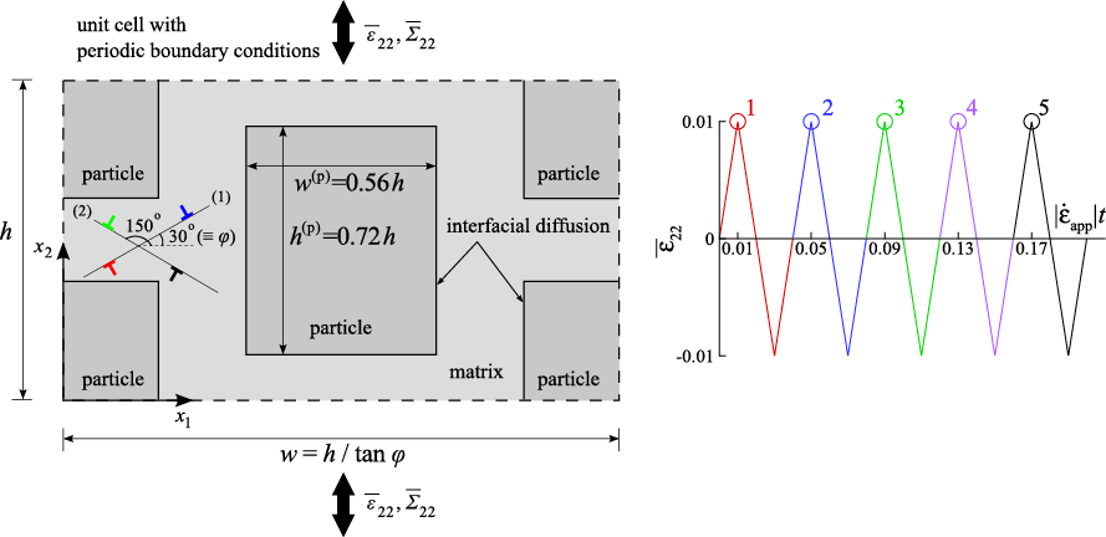
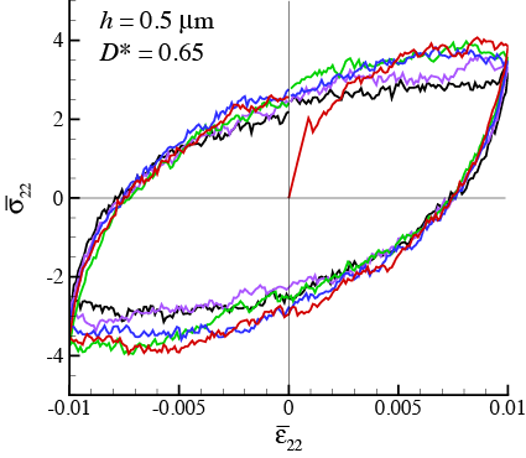
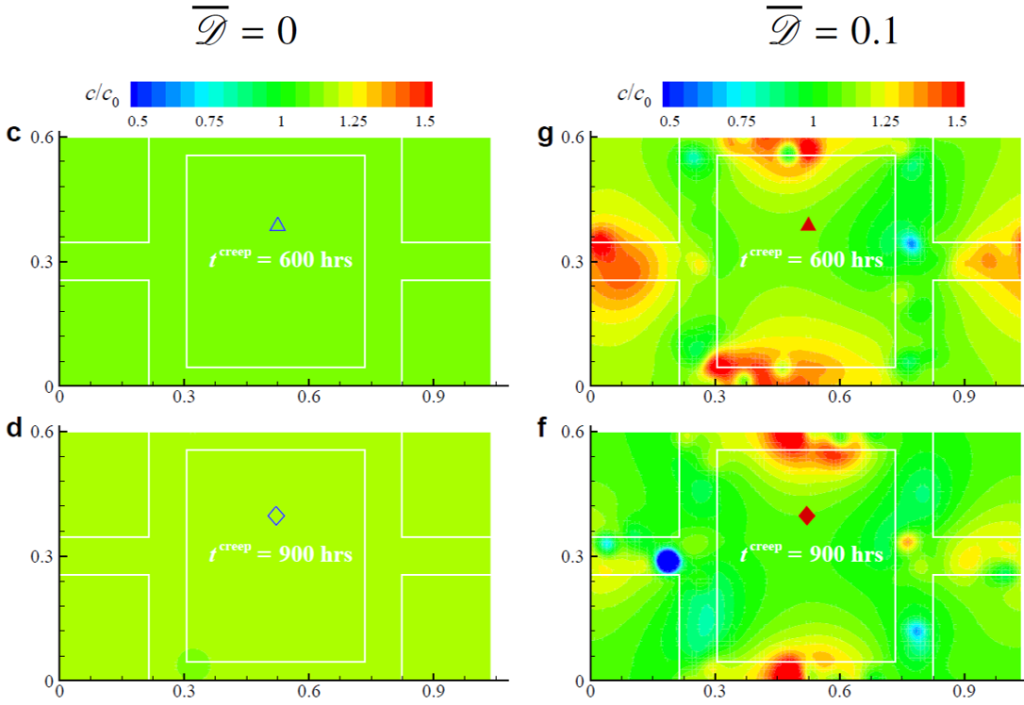
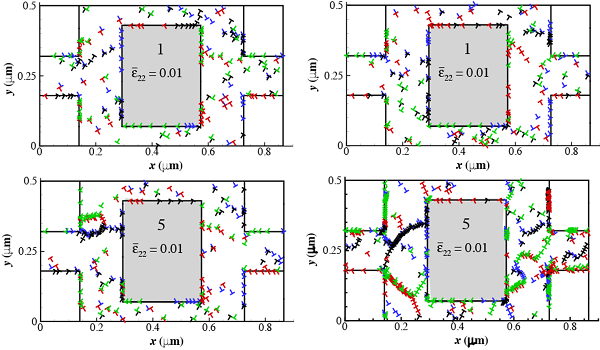
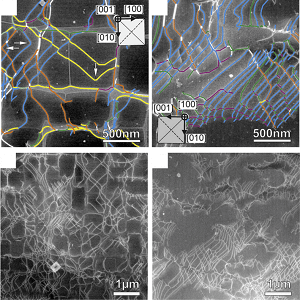
Key Literature
V. S. Deshpande, A. Needleman and E. Van der Giessen (2002), Discrete dislocation modelling of fatigue crack propagation, Acta Materialia, 50(4):831-846.
V. S. Deshpande, A. Needleman and E. Van der Giessen (2003), Finite strain discrete dislocation plasticity, Journal of the Mechanics and Physics of Solids, 51: 2057-2083.
V.S. Deshpande, A. Needleman and E. Van der Giessen (2005), Plasticity size effects in tension and compression of single crystals, Journal of the Mechanics and Physics of Solids, 53(12), 2661-2691.
S. Shishvan, R.M. McMeeking, T.M. Pollock and V.S. Deshpande (2017), Discrete dislocation plasticity analysis of the effect of interfacial diffusion on the creep response of Ni superalloys, Acta Materialia, 135, 188-200.